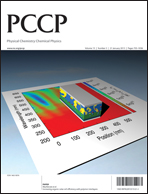Contribution of high-energy conformations to NMR chemical shifts, a DFT-BOMD study†
Abstract
This paper highlights the relevance of including the high-energy conformational states sampled by Born–Oppenheimer molecular dynamics (BOMD) in the calculation of time-averaged


 Please wait while we load your content...
Please wait while we load your content...